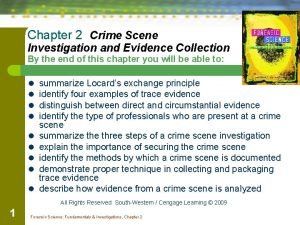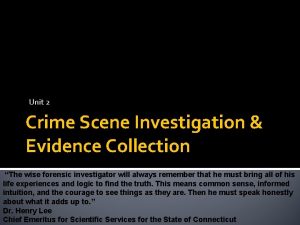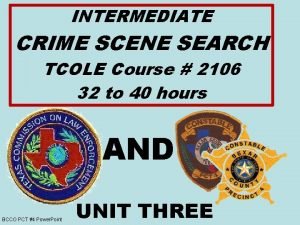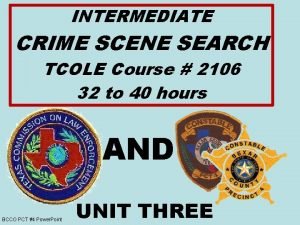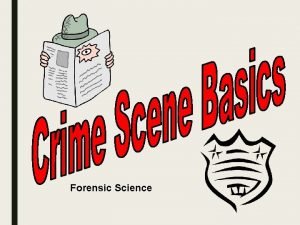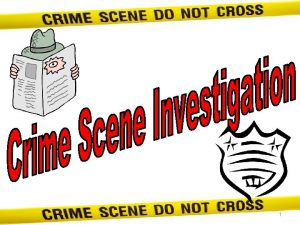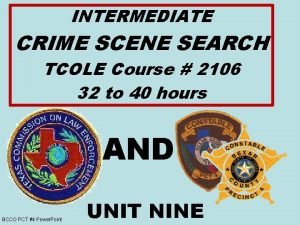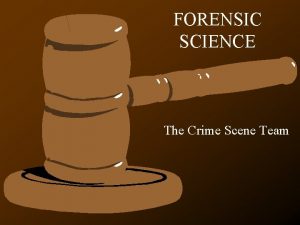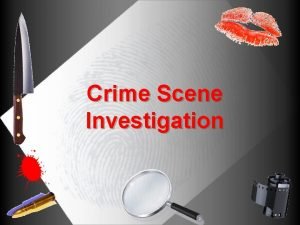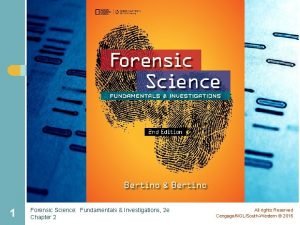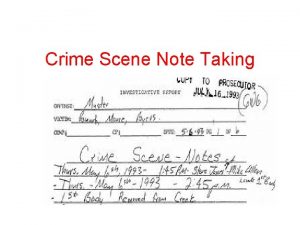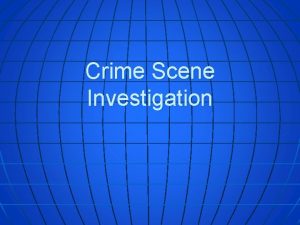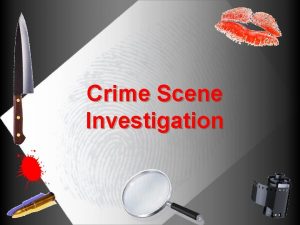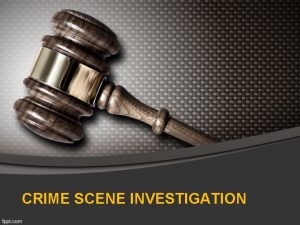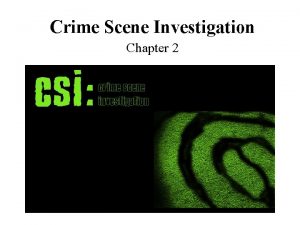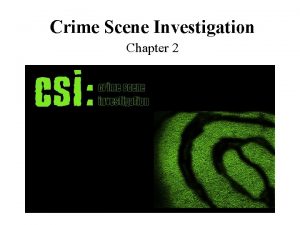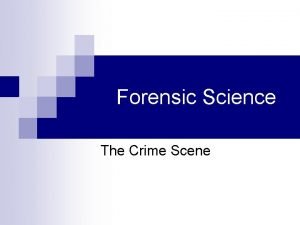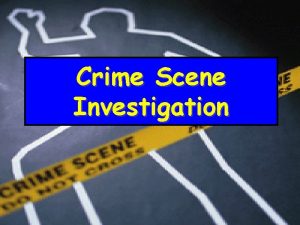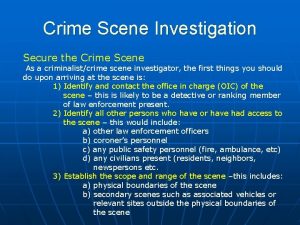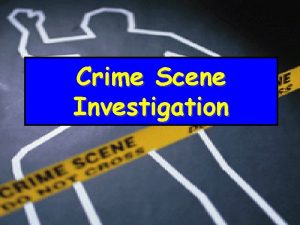Crime Scene Investigation Chapter 2 At the Crime













- Slides: 13

Crime Scene Investigation Chapter 2

At the Crime Scene • The first person on the crime scene is usually a police officer. His first job: – Take care of emergencies. • Get medical attention for any victims • Disarm/arrest perpetrators.

• Next, (s)he should secure and isolate the crime scene to prevent unauthorized access to the area: – Erect ropes or barricades – Position guards • Identify and Separate Witnesses

• Record the Crime Scene – Photography • Crime scene should be unaltered • Entire area should be photographed, in addition to adjacent areas • Many angles should be used • Position and location of body and other evidence should be shown • Close-up pictures of injuries and weapons • Use a ruler to show size of an object • Videotaping is another option

• Sketch – This is a rough sketch – Should show accurate measurements, but need not be to scale – Must show all relevant evidence – Has a legend below drawing – Should have compass heading designating north – A finished sketch can be done later (using CAD software)

• Notes – Detailed written description of the scene – Location of items of evidence recovered • Describes who discovered evidence, who packaged evidence, where evidence went once packaged – Used to “refresh” investigators’ memories – often years after the crime. – Notes can be taped rather then written (they will have to be transcribed later).

• Crime Scene Search – A systematic search for evidence must be planned and executed. – Types of search patterns • • • Spiral Strip or Line Grid method Quadrant or Zone search Evidence to be collected depends on the crime committed – Evidence that a crime was committed – Evidence of how the crime was committed – Evidence of who committed the crime


• Collection and Packaging of Evidence – Avoid Contamination! – If possible evidence should be submitted intact (entire article of clothing, etc. ) • Hairs, fibers, blood should not be removed from clothing • Trace evidence should be collected with forceps and placed in bottles, pillboxes, manilla envelopes, or screw-cap glass vials. • Bloodstained materials should NOT be stored in air-tight containers • Items from the scene of a suspicious fire MUST be stored in air-tight containers.

Chain of Custody • Every person who handled or examined evidence must be accounted for. • Everything must be carefully marked

• Controls must be obtained – Samples for comparison • Test for Contamination • Test for match (suspect)

Safety and Legal Issues • Fear of AIDS and Hepatitis – Latex gloves and protective shoe covers – Particle mask and goggles if dust present – Anything that comes into contact with potentially infectious materials (fingerprint brushes, gloves, pencils, etc. ) should be placed into biohazard bag – No eating, drinking, or smoking

• Fourth Amendment guarantees against unreasonable searches and seizure. • Need a Warrant to search, except: – Emergency circumstances – Need to prevent immediate loss or destruction of evidence – Search of a person lawfully arrested – Consent of parties involved
 Locard exchange principle
Locard exchange principle Seven s's of crime scene investigation
Seven s's of crime scene investigation Intermediate crime scene investigation tcole
Intermediate crime scene investigation tcole Intermediate crime scene investigation #2106
Intermediate crime scene investigation #2106 Crime scene vocabulary
Crime scene vocabulary Crime scene vocabulary
Crime scene vocabulary Tcole 2106
Tcole 2106 Corpus delicti
Corpus delicti Crime scene investigation background
Crime scene investigation background Small amounts of trace evidence can be conveniently
Small amounts of trace evidence can be conveniently Subdatum points
Subdatum points Intermediate crime scene investigation texas
Intermediate crime scene investigation texas Note taking crime scene investigation
Note taking crime scene investigation Grid linear spiral and quadrant are all
Grid linear spiral and quadrant are all
